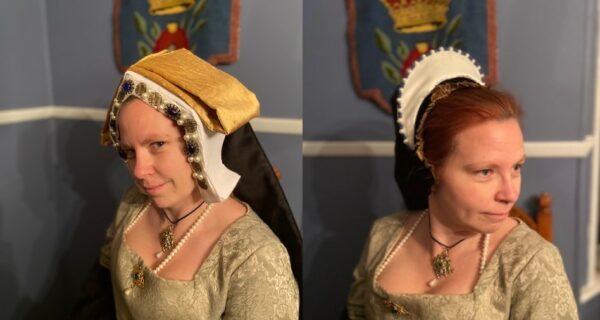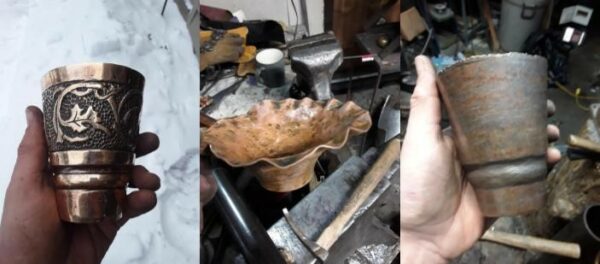For the well-dressed Tudor, the choice of what to wear carried layers of economic, social, and religious implications. While a court lady in the Tudor era may have had less variety in her wardrobe and fewer choices of color, fabric, and style, than a modern woman, what she wore each day represented a statement about... Continue Reading →
Itztlacoliuhqui; The Aztec God of Winter, Weaving A Legend – Chana Freidl the Maker
orThis Dude Has the Longest Name, Why Did I Decide To Weave It? East Kingdom Wiki: https://wiki.eastkingdom.org/index.php?title=Chana_Freidl_the_Maker Blog - https://chanafreidlthemaker.wordpress.com As a maker, I am always looking for new and interesting projects to work on. My Baronial A&S Championship provided this opportunity in 2019 when I competed with a woven band based on an Aztec... Continue Reading →
14th/15th century French/ German Raised/Repousse Cup – Llewelyn ap Gododdin
For this project I decided to forge a cup using traditional raising and repousse techniques. I was guided by forms and patterns from France and Germany during the later portion of the 14th century through to the beginning of the 15th century. These forms remained consistent through much of the period varying only slightly by... Continue Reading →
Filling In The Gaps: Using a modern pattern analysis technique to identify and correct errors in a period pattern book – Rosina von Schaffhausen
Here's a link to the 16th century German brocaded tablet weaving book that I analyzed: http://diglib.hab.de/mss/57-aug-8f/start.htm This video explains how to do the modern pattern analysis technique I used in this project. https://youtu.be/lkJ0KjW-ZSU Abstract: It is common among SCA artisans to talk about a period aesthetic as opposed to modern aesthetics. For this research project, I... Continue Reading →
Visby #3 Gauntlet – Phillipus Taber
A few hundred meters from the southern gates of Visby on the Swedish isle of Gotland is a limestone cross with the inscription "Anno Domini MCCCLXI feria III post jacobi ante portas wisby in manibus danorium ceciderint Gutness hic sepulti. Orate pro eis." Translated to english, it reads: “In the year of Our Lord 1361,... Continue Reading →




